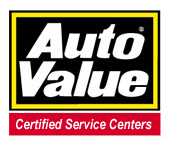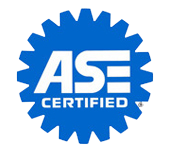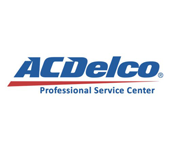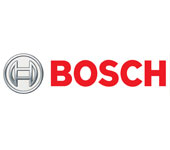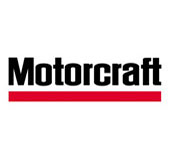
Archive for July 2021When Are Your Tires Worn Out?Posted July 25, 2021 7:12 AM
Hey Thousand Oaks area drivers, are your tires worn out? What is the standard for our CA streets? How can you tell on your vehicle?
So what happened with the 2/32 inch/1.6 mm tires on the car? Get this – when the car had traveled the distance required to stop with new tires, it was still going 55 mph/89 kph. Stopping distance was nearly doubled to 379 feet/116 meters, and it took 5.9 seconds. Niel's Auto Service
Maintaining Your Older Car in Thousand Oaks, CAPosted July 18, 2021 9:09 AM
Niel's Auto Service When "Shady" is a Good ThingPosted July 11, 2021 7:32 AMJust like your skin can burn from too much sun, so can the paint on your vehicle. It can turn dull, oxidize and fade the more ultraviolet rays beat down on it. One solution is to park in a shady spot, or you can buy a cover for your vehicle and put it on when you know it's going to be sitting in the sun for awhile. Yes, it takes a couple of minutes to put on, but in the end, keeping the gloss on your paint will help it retain its beauty… and its value. And it's not just the sun that can damage your vehicle's paint. Grit, bird droppings, sap, dust and dead bugs can all ruin the paint. So, keep your vehicle clean. Wash it with a soap made especially for vehicles. Dry it with special towels that won't scratch your paint. Remember: DON'T WASH YOUR VEHICLE IN THE SUN. Once your vehicle is washed, protect the paint even further with a coat of wax. DON'T WAX YOUR VEHICLE IN THE SUN, EITHER. Don't forget the vehicle's interior. Plastic components inside can literally disintegrate when sunshine heats them up. That's what causes that oily film on the inside of the windows. So, pick up some of those reflective panels that unfold, placing them in the windshield and back window when you know the sun and heat are going to be intense. They'll keep out the ultraviolet light and help the interior stay cooler as well. That will help prevent upholstery from fading and plastic from cracking. While you're at it, keep your interior's interior clean, too. That dust and dirt can literally bake into the dashboard, the seats, console and carpeting. There are cleaning products designed to clean your vehicle's interior that won't stain it or dry it out. You invested a lot of money into that vehicle. The sun and dirt are just waiting to destroy it. Defend your valuable vehicle against the elements. Hey, it may not wind up on display in a museum, but it'll look great and last longer with just a little TLC. Niel's Auto Service
49 Taylor Ct Ste B
Thousand Oaks, CA 91360
805-379-4040
Low Power Mystery (Ignition Coil Service)Posted July 4, 2021 11:30 AMIt's no fun when your vehicle just doesn't run the way it used to. You may notice (especially in cold weather) the engine won't start easily or when it does start, it doesn't run smoothly. It may not have much power at all. You also may have had to stop at the gas station more often, a sign your fuel economy isn't what it used to be. There could be a few different things that cause those symptoms, but one culprit could be a bad ignition coil. The coil takes the voltage from your battery and multiplies it before that power is sent over to a spark plug. That allows the plug to fire off a good jolt of electricity that ignites the fuel in your cylinder and powers the engine. There's usually one ignition coil for each cylinder (or sometimes for a pair of cylinders). If only one of them is not pushing out enough electricity, it can cause big trouble with your engine performance. Other signs of a bad ignition coil include engine backfire, an oil leak and your Check Engine light coming on. When that light comes on and you have some of those other signs, you need to have your repair facility check things out fairly soon because you may be damaging your engine and wind up with a far more expensive repair. A technician will check for a computer code to pinpoint which cylinder is having the problem. Using other diagnostics, the technician can rule out other components that might be causing the engine to misfire. Ignition coils usually last 100,000 miles/160,000 km, but other engine conditions can cause them to fail before then. Your service advisor may suggest getting all your coils replaced even though only one is malfunctioning. That's probably a good idea in a higher mileage vehicle since the other coils may be close to failure, too. It's also wise to do that if your vehicle's coils are located in a hard-to-reach spot so you likely won't have to spend the money for that labor again when another one fails. Niel's Auto Service | ||
SearchArchiveSeptember 2018 (16)October 2018 (4) November 2018 (4) December 2018 (5) January 2019 (5) February 2019 (4) March 2019 (5) April 2019 (4) May 2019 (4) June 2019 (5) July 2019 (4) August 2019 (4) September 2019 (5) October 2019 (4) November 2019 (4) December 2019 (5) January 2020 (5) February 2020 (4) March 2020 (5) April 2020 (4) May 2020 (5) June 2020 (4) July 2020 (4) August 2020 (5) September 2020 (4) October 2020 (4) November 2020 (5) December 2020 (4) January 2021 (6) February 2021 (4) March 2021 (4) April 2021 (4) May 2021 (5) June 2021 (4) July 2021 (4) August 2021 (5) September 2021 (4) October 2021 (5) November 2021 (4) December 2021 (4) January 2022 (6) February 2022 (4) March 2022 (4) April 2022 (4) May 2022 (5) June 2022 (4) July 2022 (5) August 2022 (4) September 2022 (4) October 2022 (5) November 2022 (4) December 2022 (4) January 2023 (5) February 2023 (4) March 2023 (4) April 2023 (5) May 2023 (4) June 2023 (4) July 2023 (5) August 2023 (4) September 2023 (4) October 2023 (5) November 2023 (4) December 2023 (5) January 2024 (5) February 2024 (4) March 2024 (5) April 2024 (2) | CategoriesAir Conditioning (5)Alignment (7)Alternator (2)Auto Safety (3)Automotive News (5)Battery (8)Brake Service (2)Brakes (11)Cabin Air Filter (4)Check Engine Light (2)Cooling System (11)Customer Detective Work (1)Dashboard (2)Diagnostics (1)Diesel Maintenance (1)Differential Service (1)Drive Train (6)Emergency Items (1)Engine Air Filter (1)Exhaust (8)Fluids (8)Fuel Economy (7)Fuel Saving Tip: Slow Down (1)Fuel System (27)Headlamps (3)Inspection (3)Keys to a long lasting vehicle (2)Maintenance (32)Monitoring System (3)Oil Change (2)Older Vehicles (3)Parts (4)Safe Driving (1)Safety (4)Serpentine Belt (2)Service Intervals (6)Service Standards (8)Shocks & Struts (3)Spark Plugs (1)Steering (5)Suspension (2)Timing Belt (4)Tire Rotation and Balancing (2)Tires (2)Tires and Wheels (29)TPMS (1)Transfer Case Service (1)Transmission (5)Trip Inspection (2)Warranty (1)Water Pump (1)What Customers Should Know (42)Wheel Bearings (1)Windshield Wipers (5)Winter Prep (2) | |
What our clients are saying about us
We have established longterm and stable partnerships with various clients thanks to our excellence in solving their automotive needs!
I totally trust Neil with all of my car repairs. He recently repaired a power motor that was not working. He is very efficient and fair. He doesn't do any repairs without first asking if you want it done. And his prices are very reasonable.
 Heating and Cooling Services, near Thousand Oaks, CA
Heating and Cooling Services, near Thousand Oaks, CAJust the best. Trust them completely. If you live within 100 miles it's worth the trip to get them to take care of your auto.



